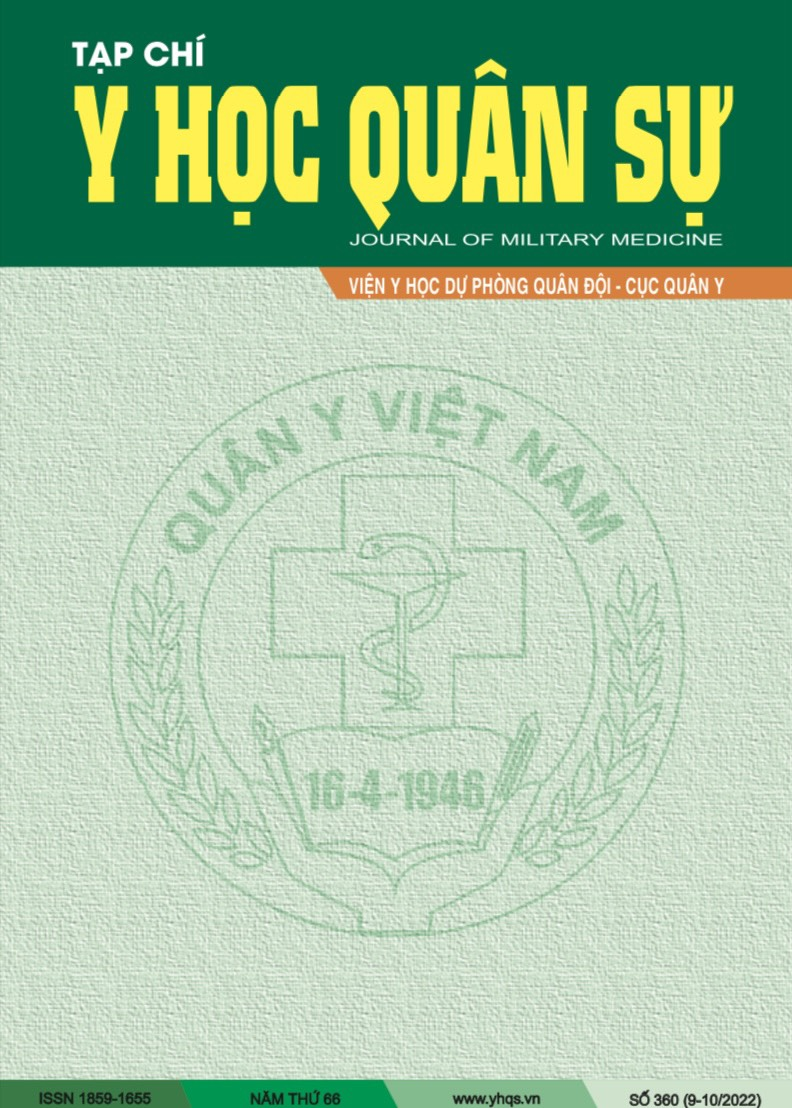KHẢO SÁT HIỆU QUẢ PHỐI HỢP KHÁNG SINH IN VITRO TRÊN CÁC CHỦNG ACINETOBACTER BAUMANNII VÀ PSEUDOMONAS AERUGINOSA KHÁNG CARBAPENEM
DOI:
https://doi.org/10.59459/1859-1655/JMM.481Từ khóa:
A. baumannii, P. aeruginosa, phối hợp kháng sinh, nồng độ ức chếTóm tắt
Mục tiêu: Khảo sát hiệu quả phối hợp kháng sinh meropenem-colistin, meropenem-ciprofloxacin và colistin-ciprofloaxcin in vitro trên các chủng vi khuẩn Acinetobacter baumannii và Pseudomonas aeruginosa.
Đối tượng và phương pháp: Khảo sát phối hợp kháng sinh meropenem-colistin, meropenem-ciprofloxacin và colistin-ciprofloaxcin trên 17 chủng A. baumannii và 17 chủng P. aeruginosa bằng phương pháp bàn cờ. Đánh giá các mức độ tương tác của kháng sinh trong phối hợp dựa trên giá trị nồng độ ức chế phân đoạn (FIC).
Kết quả: Tác dụng hiệp đồng trên A. baumannii và P. aeruginosa lần lượt là 9/17 chủng và 9/17 chủng đối với meropenem-colistin; 6/17 chủng và 5/17 chủng đối với meropenem-ciprofloxacin; 4/17 chủng và 3/17 chủng đối với colistin-ciprofloxacin. Kết quả thu được với chỉ số nồng độ ức chế phân đoạn nhỏ hơn hoặc bằng 0,5. Không xuất hiện tương tác đối kháng trên tất cả các chủng vi khuẩn đã thử nghiệm.
Kết luận: Phối hợp meropenem-colistin trên các chủng A. baumannii và P. aeruginosa cho hiệu quả hiệp đồng cao nhất, tiếp đến là phối hợp meropenem-ciprofloxacin và colistin-ciprofloxacin.
Tài liệu tham khảo
1. Peleg Y, Hooper C (2010), “Hospital-Acquired infections due to gram-negative bacteria”, The New England J. Med., 2010, 362(19): 1804-1813.
2. Magill S, Edwards J, Bamberg W, et al (2014), “Multistate point-prevalence survey of health care-associated infections”, The New England Journal Medicine, 2014, 370(13): 1198-1208.
3. Ramadan A, Gebriel G, Kadry M, et al (2018), “Carbapenem‑resistant acinetobacter baumannii and Pseudomonas aeruginosa: Characterization of carbapenemase genes and E‑test evaluation of colistin‑based combinations”, Infection and Drug Resistance, 2018, 11: 1261‑9.
4. Daoud Z, Mansour N, Masri K (2013), “Synergistic combination of carbapenems and colistin against P. aeruginosa and A. baumannii”, Journal of medical microbiology, 2013, 12(1): 93.
5. Cetin S, Tekeli A, Ozseven G, Us E, Aridogan B (2013), “Determination of in vitro activities of polymyxin B and rifampin in combination with ampicillin/sulbactam or cefoperazone/sulbactam against multidrug resistant A. baumannii by the E test and checkerboard methods”, Japanese Journal of Infectious Diseases, 2013, 66: 463 8.
6. Erdem I, Kaynar-Tascioglu J, Kaya B, Goktas P (2002), “The comparison of in the vitro effect of imipenem or meropenem combined with ciprofloxacin or levofloxacin against multidrug-resistant P. aeruginosa strains”, International Journal of Antimicrobial Agents, 2002, 20: 384-386.
7. Ek-akaranawakul K, Chanprapaph S, et al (2010), “In vitro antimicrobial activities of meropenem, ciprofloxacin, colistin alone and in combinations against meropenem-resistant P. aeruginosa”, Thai J. Pharmacol, 2010, 32 (1): 62-64.
8. Rynn C, Wootton M, Bowker E, Alan H, Reeves S (1999), “In vitro assessment of colistin’s antipseudomonal antimicrobial interactions with other antibiotics”, Clinical Microbiology and Infection, 1999, 5: 32-36.
9. Richards M et al (1993), “Investigation of synergism between combinations of ciprofloxacin, polymyxin, sulphadiazine and paminobenzoic acid”, J. of Pharmacy and Pharmacology, 1993, 45: 171-175.
10. Meliani S, et al. (2020), “Synergistic combination of colistin with imipenem, amikacine or ciprofloxacin against A. baumannii and P. aeruginosa carbapenem-resistant isolated in Annaba hospital Algeria”, Biocell, 2020, 44(2): 175-182.
Tải xuống
Đã Xuất bản
Cách trích dẫn
Số
Chuyên mục
Chấp nhận đăng 18-07-2024
Ngày xuất bản 17-02-2025



